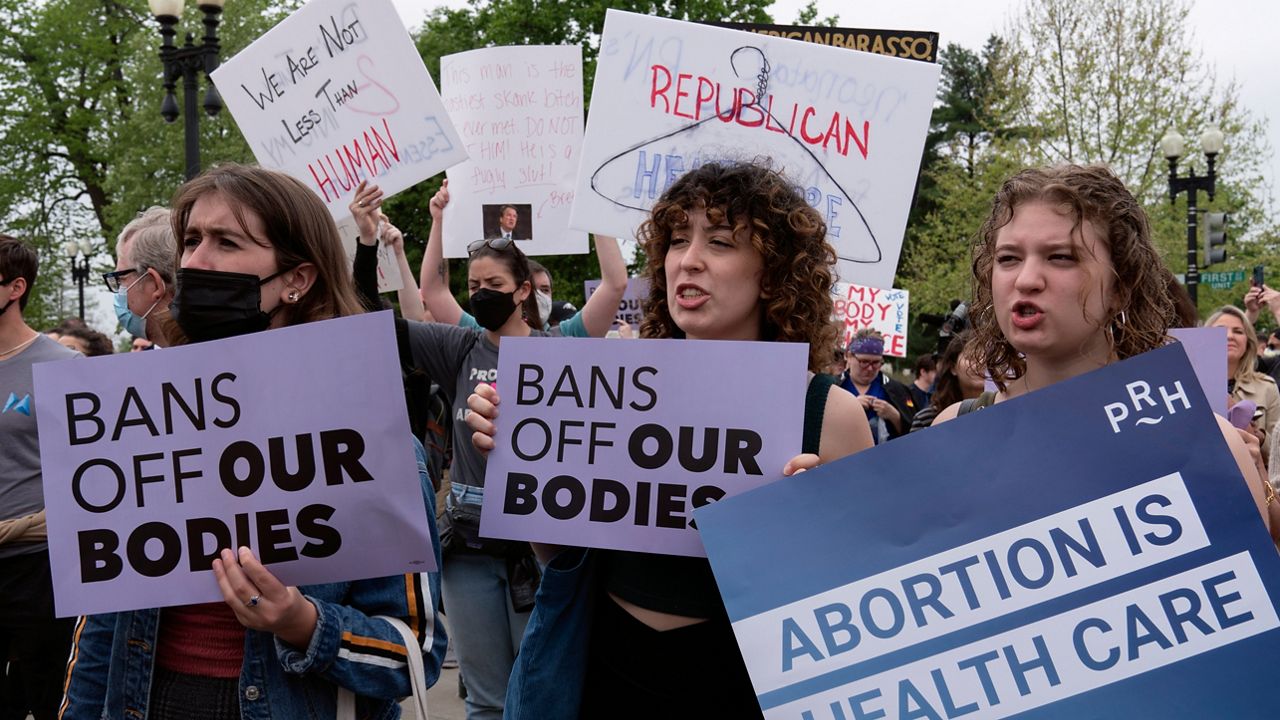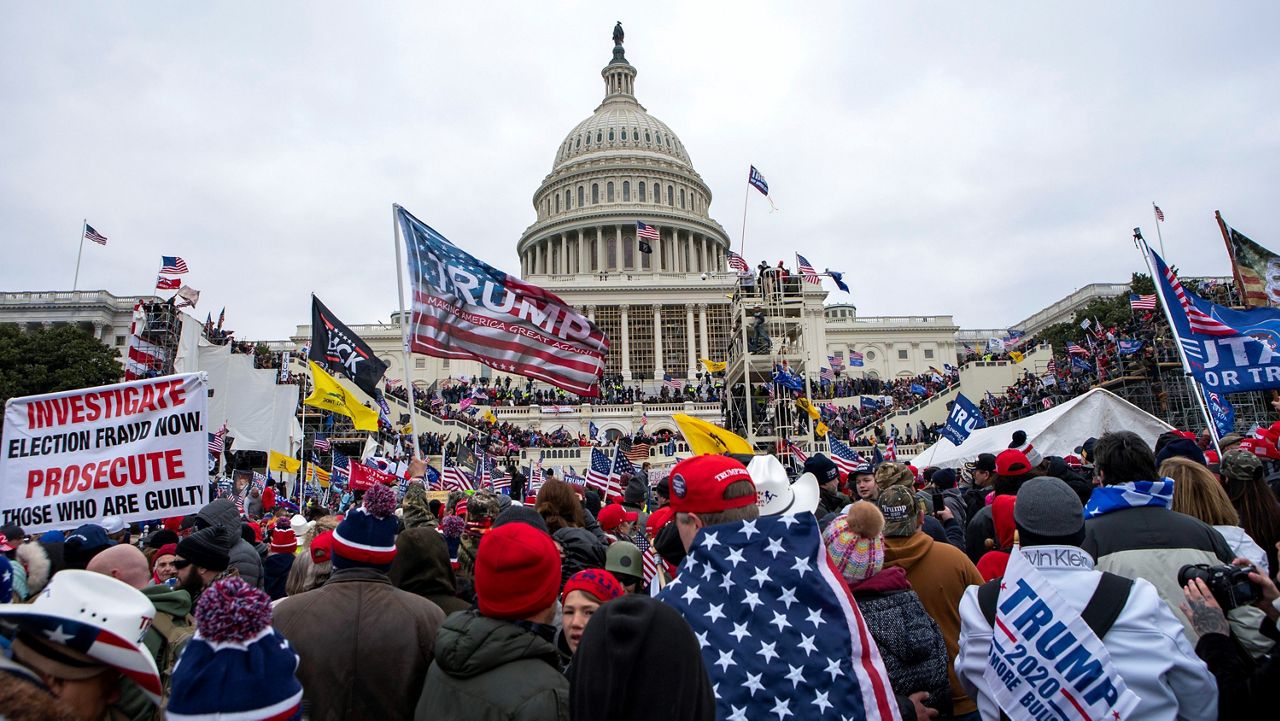The news that the United States Supreme Court may vote to overturn the landmark decision in Roe v. Wade — the case that guaranteed the constitutional right to an abortion — according to a leaked draft of a majority opinion obtained by POLITICO, sent shockwaves through the nation Monday night.
The draft opinion, authored by Justice Samuel Alito, an appointee of President George W. Bush, indicates that the high court’s conservative majority privately voted to overturn Roe and Planned Parenthood v. Casey — a 1992 decision which upheld the right to an abortion — in Dobbs v. Jackson Women’s Health, a case challenging Mississippi’s 15-week abortion ban.
While the final opinion has not yet been released, and votes could possibly change before the high court issues its final ruling in June or July, voting to overturn Roe and Casey— would constitute the most consequential shift to women’s reproductive health in modern American history.
All told, if the Supreme Court moves to weaken Roe and Casey, 26 would likely immediately or quickly move to ban abortion, according to the Guttmacher Institute, a pro-choice research organization.
The hot-button issue of abortion is one that has divided Americans among ideological lines for decades, though according to a poll from Pew Research Center, nearly 60% of Americans believe the procedure should be legal in either all or most cases.
With access to abortion hanging in the balance, take a look back at how we got here:
Abortion in the United States dates back to the days of European colonization, before America was even a country.
According to the National Institutes of Health, the legality of the procedure depended on which country colonized each colony — British colonies allowed legal abortion under common law prior to “quickening,” when a woman can feel the first movements of a fetus, which can range anywhere from 14 to 20 weeks; In French colonies, abortions were performed despite questionable consideration of legality; Spanish and Portuguese colonies banned abortions entirely.
Though Connecticut passed the first law banning abortion in 1821, it wasn’t until the mid-19th century that abortions were made illegal widely. In the 1860s, states passed anti-abortion laws which were ambiguous and hard to enforce, per the NIH, until stronger laws were enacted and “more vigorously enforced.”
Access to abortion was also varied: Women who were enslaved, for instance, were prohibited by their owners from having abortions. This was because they “wanted their slaves to produce as many children as possible since these children belonged to the slave owners,” according to the NIH.
By 1910, the procedure was illegal nationwide, forcing many women to seek out illegal underground abortion services. One such group, known as the Jane Collective, carried out thousands of abortions — many by those who were not medical professionals — in the late 1960s and early 1970s.
According to the Guttmacher Institute, experts in 1967 estimated that 800,000 abortions, mostly illegal, were performed nationwide each year prior to the decision in Roe.
In 1967, Colorado became the first state to decriminalize abortion for a number of circumstances, including rape, incest or impact to the life of the mother. Colorado was quickly followed by North Carolina, California and Oregon.
Three years later, Hawaii became the first state to allow abortions at a woman’s request, New York allowed abortions up until 24 weeks of pregnancy and Washington became the first state that changed its abortion law based on the will of the voters based on a referendum.
Additionally, in the 1960s and early 1970s, the high court struck down laws banning the distribution of birth control and contraceptives to married couples and unmarried adults, respectively.
All told, by 1971, several states effectively allowed abortion — Alaska, California, Washington, D.C., Washington state, Hawaii and New York — and some women traveled to states where it was legal, but not all could afford to do so, leading to the use of illegal underground services.
But access to abortion was piecemeal and varied nationwide: 30 states banned the procedure outright, with 16 allowing it only under special circumstances.
All of that changed in January of 1973.
In 1971, a woman named Norma McCorvey — known for years under the pseudonym of “Jane Roe” — filed a lawsuit against then-Dallas County district attorney Henry Wade, who sought to enforce a Texas law banning abortion.
McCorvey, a single woman living in Texas, did not want to continue with her third pregnancy, but was not able to legally obtain an abortion in the state. (She ultimately gave birth in June of 1970, and the child was adopted.)
Attorneys Sarah Weddington and Linda Coffee filed a lawsuit on McCorvey’s behalf, under the “Jane Roe” pseudonym, with the U.S. District Court for the Northern District of Texas, which challenged the state’s ban on abortions.
On June 17, 1970, the court unanimously ruled in favor of McCorvey, finding Texas’ law unconstitutional. Texas appealed the ruling to the Supreme Court, which agreed to hear the case in 1971.
On January 22, 1973, the high court handed down a 7-2 ruling that fundamentally changed the country for the next five decades, determining that women had a fundamental right to choose an abortion without government interference, impacting laws in nearly every state.
(Coincidentally, the decision in Roe v. Wade was given to a news outlet, “Time," and was published in the magazine hours before the court issued its ruling.)
The high court found that the Texas law making abortion a crime violated the Due Process Clause of the Fourteenth Amendment, which provides a fundamental “right to privacy,” which protects a woman’s right to have an abortion.
“This right of privacy, whether it be founded in the Fourteenth Amendment's concept of personal liberty and restrictions upon state action, as we feel it is, or … in the Ninth Amendment's reservation of rights to the people, is broad enough to encompass a woman's decision whether or not to terminate her pregnancy,” Justice Harry Blackmun, an appointee of President Richard Nixon, wrote in the opinion of the court. “The detriment that the State would impose upon the pregnant woman by denying this choice altogether is apparent.”
The court also ruled that the right is not absolute, and, as such, tied state regulations to pregnancy’s three trimesters: The government could not prohibit abortions in the first, could mandate reasonable health regulations in the second and but could ban them in the third, save for those necessary to save the live of the mother. These regulations were done away with in Planned Parenthood v. Casey, which established the standard of fetal viability instead.
The decision was cheered nationwide by some, but others questioned it as a case of judicial activism.
Blackmun himself said in 1974 that the decision would “be regarded as one of the worst mistakes in the court's history or one of its great decisions, a turning point.”
Roe was cited in a number of cases and challenged by a number of others since the decision was handed down in 1973 — including in one of the cases most closely linked to upholding and strengthening it, 1992’s Planned Parenthood v. Casey.
Plaintiffs in Casey sought to challenge five provisions of a Pennsylvania law — including informed consent, spousal notice and parental consent — which they argued were unconstitutional under Roe.
The case was one that appeared to be an opportunity to overturn the decision in Roe. Two of the high court’s liberal justices, William Brennan and Thurgood Marshall, were replaced by David Souter and Clarence Thomas, appointed by then-President George H.W. Bush, who opposed Roe. Blackmun and Justice Byron White, who dissented the 1973 ruling, were the only justices remaining from the Roe decision.
All told, six of the justices on the high court were appointed by Bush or his predecessor, Ronald Reagan, who both opposed the landmark 1973 ruling.
But Souter, along with Reagan-appointed Justices Anthony Kennedy and Sandra Day O’Connor, broke with with conservatives and authored a plurality ruling which upheld the “essential holding” of Roe, which stated that women have the right to choose an abortion without undue interference from the government under the Due Process Clause of the Fourteenth Amendment.
The court also found that spousal awareness was invalid under the Fourteenth Amendment, saying it created an undue burden for married women, but upheld parental consent, informed consent and a 24-hour waiting period, saying none of those created an undue burden.
The plurality ruling also overturned Roe’s trimester system in favor of an analysis of fetal viability.
In the years since the Roe and Casey decisions were issued, abortion became a contentious and hot-button issue nationwide.
The majority of Americans support legal abortion in all or most cases, believe that a decision about an abortion should be between a woman an her doctor and believe that the high court should not overturn the decision in Roe, according to a recent ABC News-Washington Post poll.
While the poll was conducted before POLITICO published a draft opinion which suggests that a majority of Supreme Court justices voted to overturn Roe and Casey, the survey appears to show that the attitudes of Americans toward the procedure are largely unchanged in recent years.
The draft opinion represents a potential decision in Dobbs v. Jackson Women's Health Organization, a case questioning Mississippi’s 15-week abortion ban which directly challenges Roe and Casey.
It is unrelated to a controversial Texas law which bans the procedure after a fetal heartbeat is detected — roughly around six weeks, before most women know they are pregnant — the most restrictive abortion law in the nation. It also has a unique structure which allows private citizens to sue abortion providers or anyone is suspected of “aiding and abetting” an abortion.
Abortion rights advocates and the Biden Administration sought to challenge the Texas law, but the Supreme Court allowed the law to remain in place without ruling on its constitutionality.
Should Roe be overturned, abortion would immediately be effectively outlawed in a number of states with so-called “trigger laws”: Arkansas, Idaho, Kentucky, Louisiana, Mississippi, Missouri, North Dakota, Oklahoma, South Dakota, Tennessee, Texas, Utah and Wyoming. According to the Guttmacher Institute, several other states would follow suit.
The Biden Administration and Democrats have pledged to fight for abortion rights if Roe is overturned, but unless they have enough votes to overcome the 60-vote legislative filibuster threshold in the Senate, it’s unclear how they will do so.
“If the Court does overturn Roe, it will fall on our nation’s elected officials at all levels of government to protect a woman’s right to choose," President Joe Biden wrote in a statement Tuesday. "And it will fall on voters to elect pro-choice officials this November. At the federal level, we will need more pro-choice Senators and a pro-choice majority in the House to adopt legislation that codifies Roe, which I will work to pass and sign into law."








